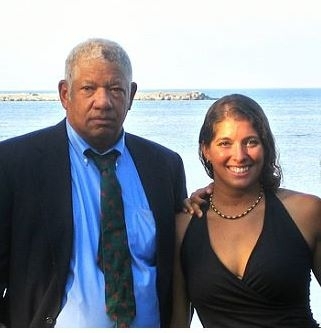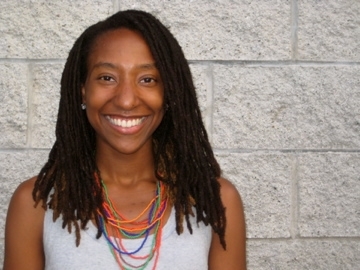Visit the Series Homepage
Vermont Reads 2011: "To Kill A Mockingbird"
(Wertlieb) Good morning, I’m Mitch Wertlieb. All this week, VPR is examining the role of race in Vermont as part of a series inspired by "To Killing a Mockingbird." The Pulitzer Prize-winning novel was chosen by the Vermont Humanities Council this year for Vermont Reads, its annual statewide reading program.
Much of Harper Lee’s classic novel centers around the trial of Tom Robinson, a black man accused of raping a white woman in Depression-era Alabama.
At one point in the novel, the narrator, a young girl named Scout, and her friend, a boy named Dill take a break outside the courthouse after an exhausting day watching the trial. They strike up a conversation with a local man, named Mr. Raymond, who lives on the margins of the small town society, because his wife is black. Suddenly, as we hear in this excerpt, Dill is overcome by emotion.
Mr. Raymond tries to explain it to Scout:
(Excerpt) "Things haven’t caught up with that one’s instinct yet. Let him get a little older and he won’t get sick and cry. Maybe things’ll strike him as being – not quite right, say, but he won’t cry, not when he gets a few years on him." "Cry about what, Mr. Raymond?" Dill’s maleness was beginning to assert itself. "Cry about the simple hell people give other people – without even thinking. Cry about the hell white people give colored folks, without even stopping to think that they’re people, too."
(Wertlieb) While racial tensions do make the news occasionally in Vermont today, families with members of different races have become more common. Last year’s census showed that Vermonters who self-identify with two or more races make up the largest minority population in Vermont.
About 2,500 people identify themselves as both white and African-American.
But when the Jones family moved to Addison County 30 years ago, they were the only multi-racial family in town.
We sat down with two of the family members and first we hear from 29-year-old Adrienne Raphael, one of the family’s two daughters, who moved back to Addison County after leaving for seven years:
 (Raphael) "My mother is from outside of Detroit, sort of a WASP-y background, and my father is black and he’s from outside of Boston.
(Raphael) "My mother is from outside of Detroit, sort of a WASP-y background, and my father is black and he’s from outside of Boston.
My husband and I got married, he’s also from Vermont and we bought a house. I had a lot of anxiety moving back here. For me there were a lot of reasons, but the lack of diversity was one of them. I wanted my kids to grow up in place where there was more diversity because that was something that I really felt was missing.
It was also hard being the only person with a black father. There’s of course the, "when you’re young you want to fit in" thing. But also, in the early 80s to mid 80s there really were not that much diversity in Vermont at all, it’s really changed a lot. I think there was a lot of ignorance and racism and I would say it was more direct when I was younger, in elementary school I think when you get older, because we live in small communities here, people know. They know that you’re biracial so they’re not going to say things to your face. But as I got older it was more like if I was at a party and people didn’t know, overhearing things.
You wouldn’t know that I was black if you met me, unless you saw me next to my dad, who I look like. It’s interesting. I think that biracial people all have very different experiences and that’s an interesting thing too because you get to hear things that you wouldn’t hear otherwise. I don’t experience the racism that I would experience if I looked more black.
(Wertlieb) Adrienne’s father is Geoffrey Jones.
(Jones) "Back when I came to Vermont the census said there were 500 people of color in the State of Vermont, which certainly felt to be true when I got here. I was the first black trooper in Vermont.
We have tried as a family to consciously to come here and accept how people are here in the sense that we don’t post and I think that was recognized by some people.
The kids went to local schools, turns out the local schools were excellent, one went to Yale, one went to Brown. They had really good marks. But did they always get a fair shake, no I’m quite certain of that. How do I put this? My wife who is white always expects stuff to be on the level, and I’m black so I expect stuff to be not on the level, and that’s an absolute truth. If I get stopped out here by a cop on the way home, I won’t expect it to be on the level, she will expect it to be on the level, doesn’t mean that everything is everything, but that’s an expectation we have, the kids are aware of that. And they’ve got that little piece that says the last thing you do before you go out is you put on your suit of armor. And you keep your eyes open. They know that.
The further I get away from the influx of people, the more it’s still Vermont, and the more it’s like what I came for, plus there’s that wonderful thing where we were always outsiders, kind of. But as my kids grew up here and stay here and as people know them. Since then we’ve become a little bit less outsiders and more and more locals whose cars won’t run."
(Wertlieb) As the worst years of America’s most troubling race relations fade over time, some parents wonder if they even need to have a discussion about race with their children. Many say their kids now live in a color-blind world.
Mercedes Mack doesn’t agree with that view. She talks about race with students in the Burlington School District. Mack says the idea that we’re now living in a post-racial society doesn’t ring true to her experiences:
( Mack) I’m still dealing with racism whether really big like macro explicit expressions of it, or smaller micro aggressions where someone doesn’t say hello to me when I walk in a store, but will say hello to my white friends. That’s another way that I know that we don’t live in a post-racial US. If you talk to young people, now I’m talking about people my age, we laugh about it and we’re like, "Oh, what an intellectual way to have an out to dealing with talking about issues of race."
Mack) I’m still dealing with racism whether really big like macro explicit expressions of it, or smaller micro aggressions where someone doesn’t say hello to me when I walk in a store, but will say hello to my white friends. That’s another way that I know that we don’t live in a post-racial US. If you talk to young people, now I’m talking about people my age, we laugh about it and we’re like, "Oh, what an intellectual way to have an out to dealing with talking about issues of race."
(Wertlieb) You grew up in Vermont, of course. I wonder how much race played a factor in your childhood.
(Mack) I think because all of us have a race, it plays a part in your childhood, it’s whether or not things happen that make you aware of that. Because I have brown skin, and because I grew up in Vermont and there’s not a lot of people who look like me or have the same type of hair that I do, or have the same family that I do because I have an interracial family, we really stick out.
(Wertlieb) Did your parents sort of warn you about that? Did they say to you growing up, listen, you’re going to hear some things and we’re not the norm.
(Mack) Yeah.
(Wertlieb) How did they prepare you for that?
(Mack) My home had this bumper sticker that said, "Kids are people too." And she had this way of talking to me about, that I was a person and that no one should ever be talking to me in a way that made me feel that I was less than them. So I feel that that was kind of the foundation for it. You know especially when I was younger people would touch my hair or stare at me. And I think the kind of interesting twist on this is that one of my moms is a white woman and I would come home and tell her, "this kid called me the ‘n’ word." And she would have to, just as my brown mom would have to say, "all right, we’re going to go, where is this child, we need to go talk to them. You, know it’s not ok that people are calling you this. " So really seeing that the both of them were ready to take care of me and that my Momma Sharon was able to get it, as a white person she knew that racism is a problem and that she was gong to have to stand up for me, because she loved me and because I was her child, am her child. (laughs)
(Wertlieb) You remember reading "To Kill a Mockingbird" in school, what effect did the book have on you?
(Mack) The effect is that you end up having, like, all eyes on you in the classroom. The ‘n’ word comes up and people kind of glance over at you to see what your reaction is. Right, so now I’m 25 and that’s what I remember about reading these books. And I think the point of the lesson is to talk about the characters, and the character development and the story line, which is not at all what I walked away from reading that book with. What I walked away with was another feeling of like isolation in the classroom or being the other or yet another book where people of color are expressed in this way or portrayed in this way. There’s no…You know working in the school district now, we are always trying to find resources that portray people of color not as slaves, not as recently freed slaves, and not as only athletes. There are many other ways that people of color exist in the world. Sometimes, I’m talking to a friend who I grew up with who also works in the district and I’m like I just want a book where people are at home cooking pancakes, doing just everyday things, you know.
(Wertlieb) Mercedes Mack lives in Burlington and works in the Burlington School system, thanks so much for speaking with us.
(Mack) Thank you.
(Wertlieb) VPR’s series, Vermont Reads, To Kill a Mockingbird, continues tomorrow morning with a look at perceptions around racial profiling. You can find the first two parts of the series at VPR-dot-net. And listen today at noon, VPR’s Vermont Edition is headed to Burr and Burton high school to talk about the book with students.
For VPR News, I’m Mitch Wertlieb.